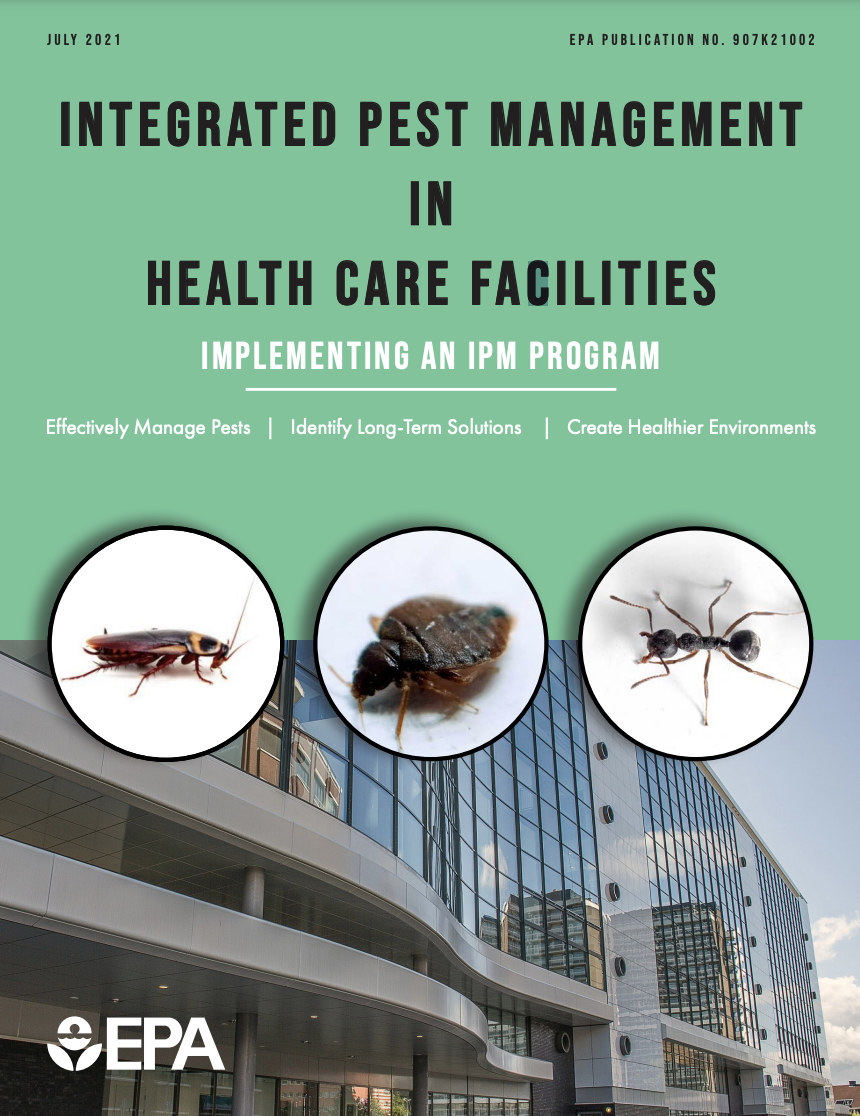Integrated Pest Management (IPM) is an environmentally friendly, commonsense approach to controlling pests both inside and on property grounds of a health care facility. Traditional pest control uses calendar-based pesticide treatments rather than non-chemical prevention, resulting in the routine application of pesticides. In contrast, IPM focuses on pest prevention and least-toxic control methods, making IPM a cost-effective, practical approach to pest management. Preventive pesticide application is limited to minimize the risk of pesticide exposure, especially when non-chemical methods provide the same results. Health care facilities, including but not limited to hospitals, ambulatory centers, long-term care facilities, rehabilitation centers, and other outpatient facilities, must meet the highest level of sanitation, while caring for sensitive populations. While it is important that health care facilities be free from pests that pose health risks, it is also critical that patients and employees be protected from chemicals that may also threaten their health. This toolkit was prepared to introduce and acquaint readers with effective IPM. It presents recommendations for best management practices for IPM in health care facilities. Throughout the nation, facilities that have adopted IPM report long-term, sustainable pest mitigation that reduces the use of pesticides.
Resource type
Guidance
Geographic area
Global
